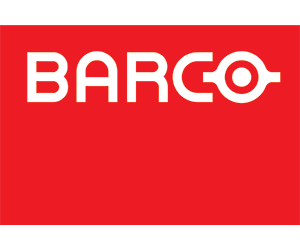Installing a Video Wall? Ask These 5 Questions First
Video walls display large, vibrant visuals and can provide a valuable — and unmistakable — service in healthcare.
When taking center stage in a hospital clinical command center, they help staff track data such as available beds and discharge times, as well as the flow of patients around the hospital. Installed in a waiting room or lobby, video walls may supply visitor entertainment as well as display wayfinding services, general announcements and public art.
Momentum is growing: Fortune Business Insights expects the LED video wall market to reach $36 billion by 2026 — more than double the market share in 2018.
Still, many considerations must be addressed before installing a video wall in your hospital. Among them: screen size, building infrastructure, maintenance and staff training.
Hospitals typically go with 55-inch displays, according to Suchit Rout, director of strategic marketing at Barco, a collaborative visualization solution provider. You can configure a wall to create a massive display of several panels. The video walls should have the least “bezel” — the gaps between panels — possible, Rout says, to avoid distractions due to breaks that interrupt the content shown.
He also advises hospitals to pursue professional-grade video walls rather than the consumer displays found in homes. “If it’s a 24/7 operations center, they must consider buying only fit-for-purpose products,” he says.
Rout shared more video wall best practices with HealthTech, along with key questions to ask before making a purchase.
1. Where Will a Video Wall Be Placed?
Health systems can leverage video walls to provide critical information on a hospital’s workflow, such as patient testing needs, hospital capacity planning, remote patient monitoring and employee schedules. So, first determine if video walls make sense in waiting rooms or behind the scenes in clinical command centers, which are central points of operations.
“They act as the nerve center of the hospital and bring together all relevant data and information for staff to make the right decisions for patients, personnel and other stakeholders,” Rout says. “Each clinical command center would have one video wall, at least. It all depends on their operational workflows.”
Displays targeting patients and visitors should be installed in places with maximum visibility. Adjust video wall settings based on lighting conditions in your healthcare facility. Companies such as Barco offer brightness options of 500 nits and 800 nits.
2. What Type of Content Will Be Displayed?
Decide whether you want to display wayfinding information to help patients navigate a hospital or if the video wall will show entertainment.
For staff-facing applications, query your staff: Should the wall offer the ability to connect with first responders? Could employees benefit from an interactive dashboard that incorporates a feed from livestreaming cameras from an ambulance or at a building’s entrance?
Take stock of the organization’s key needs and work with stakeholders to design your approach.
3. Will It Sync With Outside Agencies?
Hospital staffers must decide whether they need to collaborate with first responders, road-traffic management or other external partners to add lifesaving functionality to a video wall when care teams spring into action.
“If the ambulance is inbound and they see a traffic jam, who do they escalate to so they can let the ambulance through, for instance?” Rout says. “Maybe the road-traffic authorities allow them to use another lane. This can only be possible if information can be shared between the police department and the hospital, which are typically two secured and closed networks.”
READ MORE: A look inside AdventHealth’s massive new command center.
4. How Often Will You Change the Content?
The frequency of refreshing the information on the displays with new or alternating content could depend on the traffic patterns in public spaces. Also, plan to update content according to the schedules of command center staff. If you have hospital operations staff working 24/7, then you may need content refreshed more often to accommodate their workflow.
Automation capabilities can simplify the refreshing of video wall content for staff.
“Look for content management media platforms that are IP-network-based and have so-called ‘open APIs’ that allow for easy automation and integration with other applications,” Rout advises. “These are IT-friendly solutions, and their scalability makes them future-proof.”
5. Is Software Necessary to Maintain the Video Wall?
Healthcare IT leaders must consult with hospital staff as well as vendors to determine whether special software is needed to operate the video wall.
Barco and other companies offer remote asset management software that centrally and securely manages alarms from video walls to indicate outages or other emergencies, Rout says. Make sure all project stakeholders understand the function and necessity of such software.
Brought to you by:











